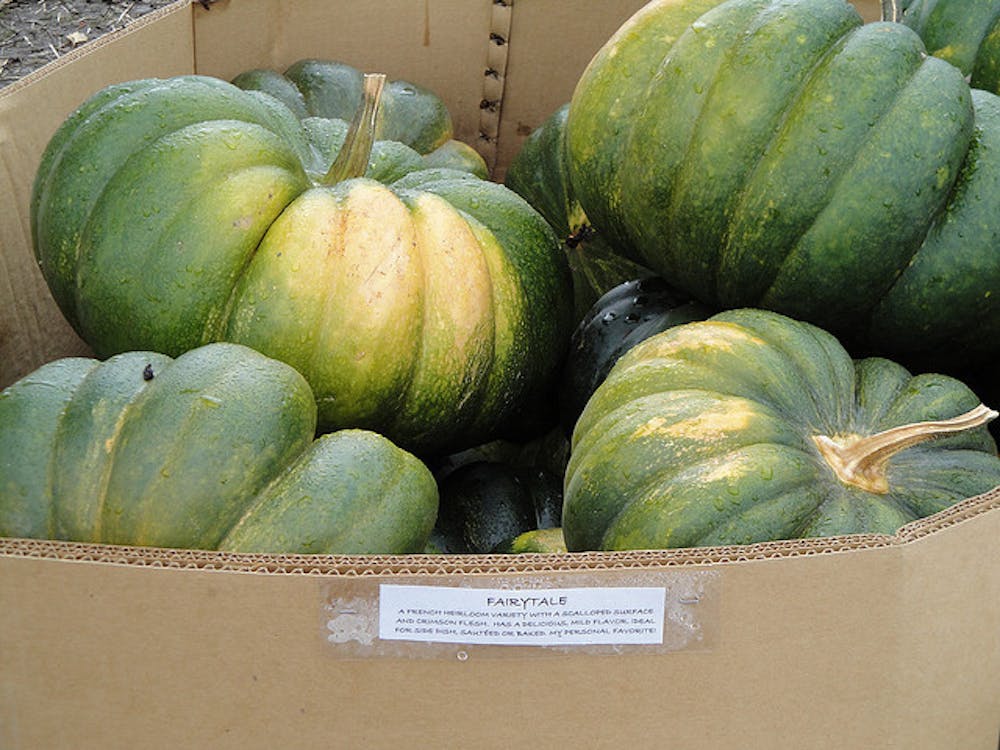Squashes have been in every grocery store since the beginning of October and they will stay on the shelves at least until classes resume after Thanksgiving break. At first glance, squashes don’t look like they could ever be friends with university students: their thick skins and dense flesh - not tasty at all when raw - make them impossible as a quick snack. A closer look, however, reveals the benefits of squashes which even university students can enjoy: squashes keep for a very long time (most up to a month or so) and simply baking one will yield a high-fiber, nutritious, often yam-like meal.
Squash seeds can be easily roasted just like pumpkin seeds. Other options include tossing them in the trash or compost, burying them in your yard, or planting up to five in a large pot of soil. Water them often, but make sure the soil is well-draining, not full of clay. Squash plants can be fun to grow, as their vines loop around everything they touch.

One thing to keep in mind is that squashes are “long day plants”, which is to say that in order to flower, squashes need at least 8 hours of light. Surprisingly, fluorescent lights cover almost the same spectrum as the sun—if you have a fluorescent light handy, simply place your squash under the light. Good winter squash fruit growing indoors is unlikely, but the flowers should appear after one or two months of growth. Squash flowers can be pan fried or eaten in a salad.
As a plant native to the Americas, eating squash can be seen as fulfilling one’s civic duty as a resident of the USA. Perhaps surprisingly, most squashes in stores are edible—even the ones sold as interior décor. A few edible decorative squashes include:


Most squashes seem to do best with a splash of olive oil or butter, salt to taste, and some spices and herbs sprinkled on top. I like mine with garlic, cinnamon, and basil, after baking at 350˚F for 40 minutes or so, until the flesh is soft when poked with a fork. The charm of squash is its easy preparation for cooking, so even a student in a dorm oven won’t be overwhelmed by the task: simply wash, cut in half, scoop out the seeds, and put on a baking sheet. It is not necessary for the oven to have heated up all the way before sticking the squash in. Some squashes have edible skins and some don’t, it depends more on a person’s fondness of eating rinds than the squash.
Although eating a piece of interior décor may seem odd and possibly even barbaric, by baking the squashes that beautify your room, you save food money and reduce waste, all while getting loads of vitamins. And remember this: most canned pumpkin stored in stores is not truly pumpkin—it is the dickinson squash! Dickinson squash resembles butternut squash in appearance and has much denser, sweeter flesh than pumpkin, which makes it much more suitable for the autumn staple, “pumpkin” pie. After enjoying a slice of what you now realize is squash pie, can trying decorative varieties of the same plant truly be so strange?
The Squashes: Tasty, Cheap and Nutritious

